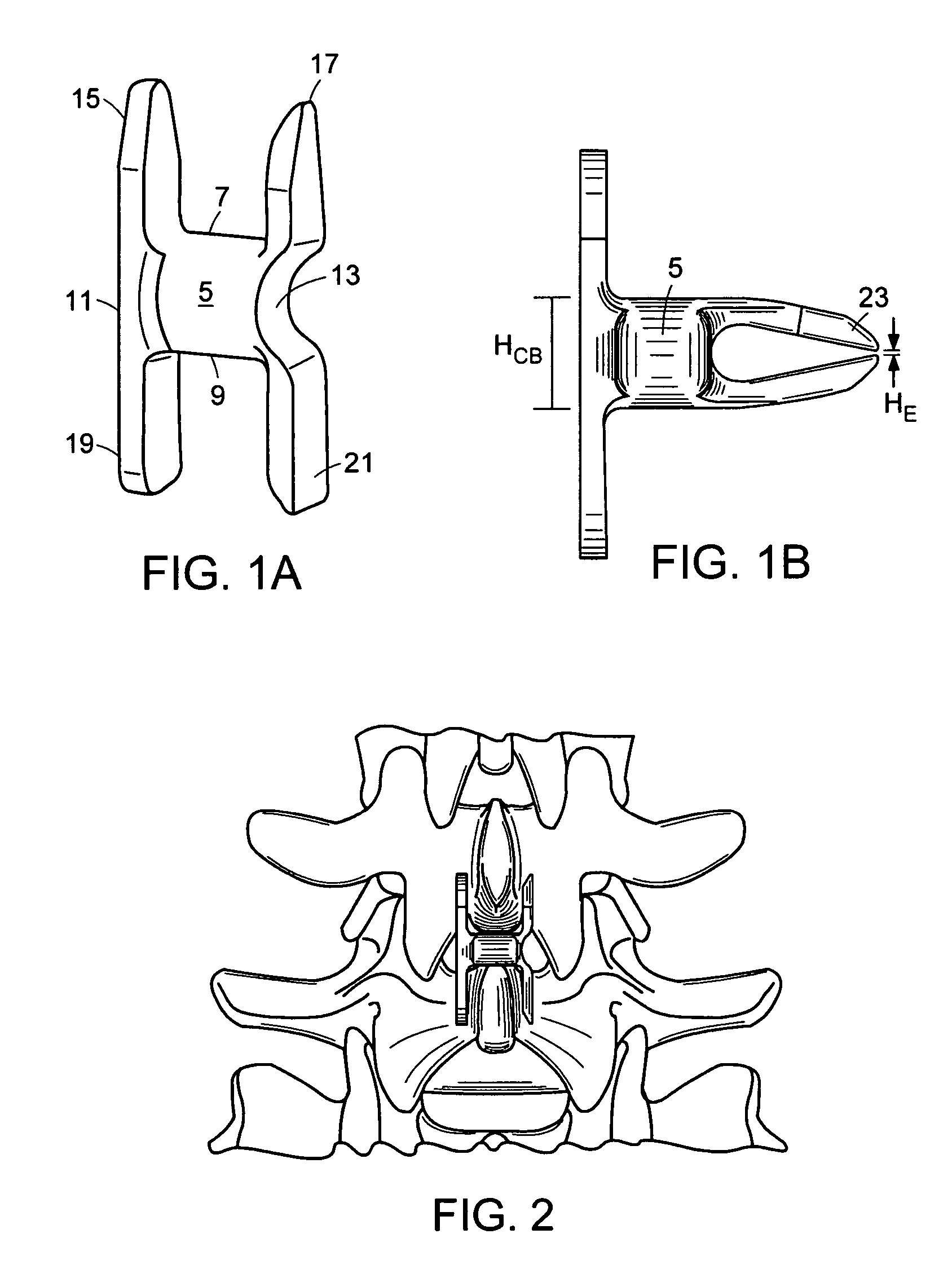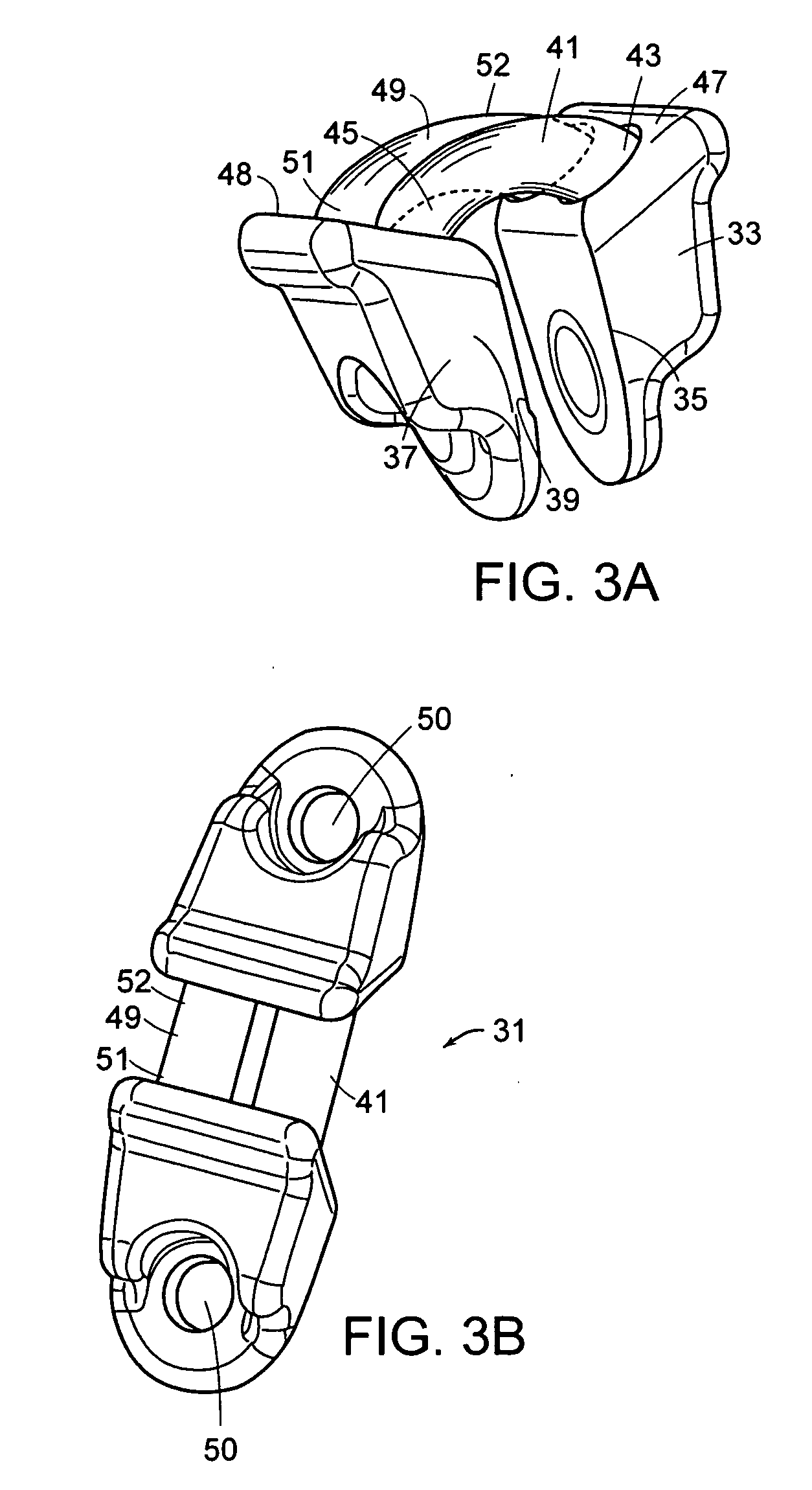Posterior process dynamic spacer
a dynamic spacer and anterior process technology, applied in the direction of prosthesis, physical/chemical process catalysts, osteosynthesis devices, etc., can solve the problems of reducing the degree of extension of the back, causing pain, and possesses some limitations, so as to achieve the effect of gently limiting excessive extension
- Summary
- Abstract
- Description
- Claims
- Application Information
AI Technical Summary
Benefits of technology
Problems solved by technology
Method used
Image
Examples
Embodiment Construction
[0054] For the purposes of the present invention, the term “interspinous” refers to the volume located between two adjacent spinous processes of adjacent vertebrae. The terms “anterior” and “posterior” are used as they are normally used in spinal anatomy. P Accordingly, the “anterior” portion of the interspinous device is that portion rests relatively close to the spinal cord, while the “posterior” portion of the interspinous device is that portion rests relatively close to the skin on the patient's back. Now referring to FIG. 7, there is provided an anatomic “functional spinal unit” or FSU comprising an upper vertebrae having an upper vertebral body VU and an upper spinous process SPu, a lower vertebra having a lower vertebral body VL having a lower spinous process SPL. The vertebral bodies lies in the anterior A portion of the FSU, while the spinous processes lie in the posterior portion P of the FSU. Disposed between the vertebral bodies is a disc space DISC. Disposed between the...
PUM
| Property | Measurement | Unit |
|---|---|---|
| Angle | aaaaa | aaaaa |
| Angle | aaaaa | aaaaa |
| Length | aaaaa | aaaaa |
Abstract
Description
Claims
Application Information
 Login to View More
Login to View More - R&D
- Intellectual Property
- Life Sciences
- Materials
- Tech Scout
- Unparalleled Data Quality
- Higher Quality Content
- 60% Fewer Hallucinations
Browse by: Latest US Patents, China's latest patents, Technical Efficacy Thesaurus, Application Domain, Technology Topic, Popular Technical Reports.
© 2025 PatSnap. All rights reserved.Legal|Privacy policy|Modern Slavery Act Transparency Statement|Sitemap|About US| Contact US: help@patsnap.com



